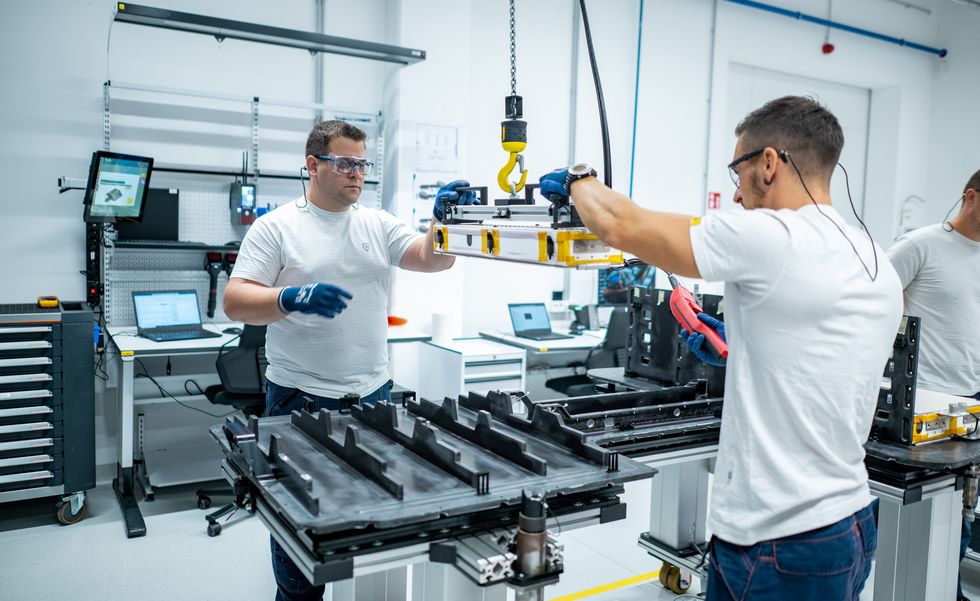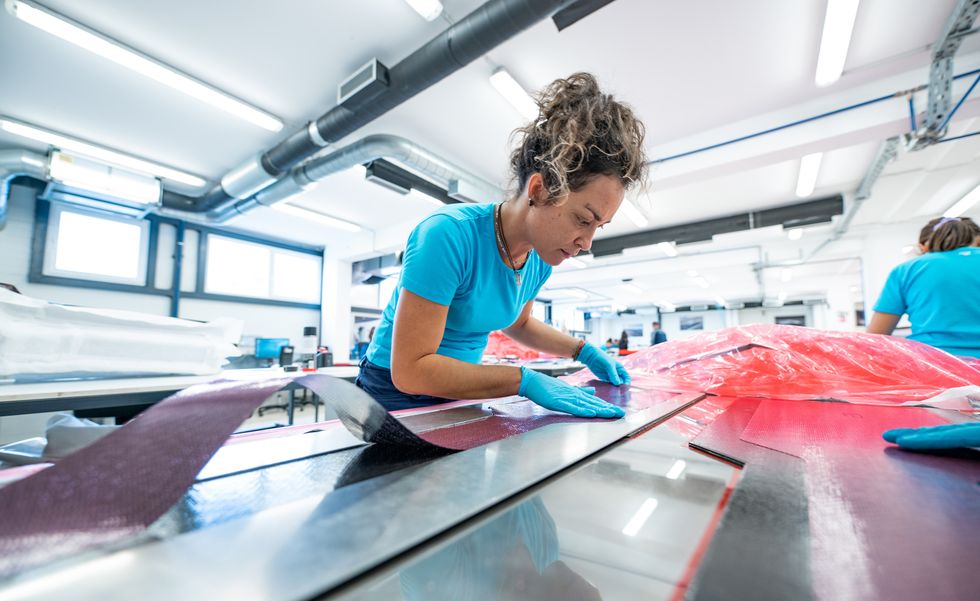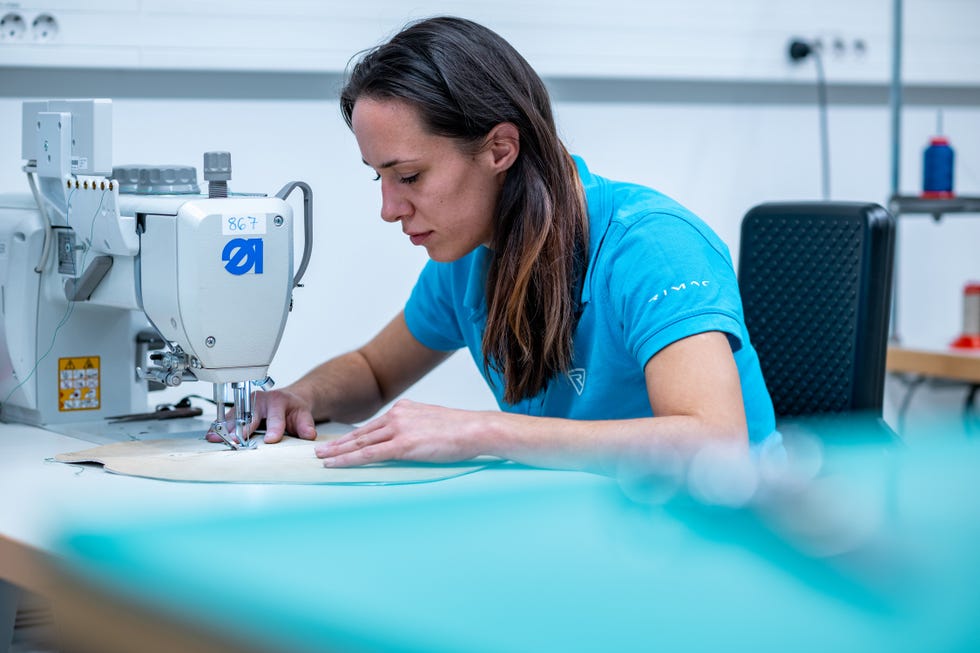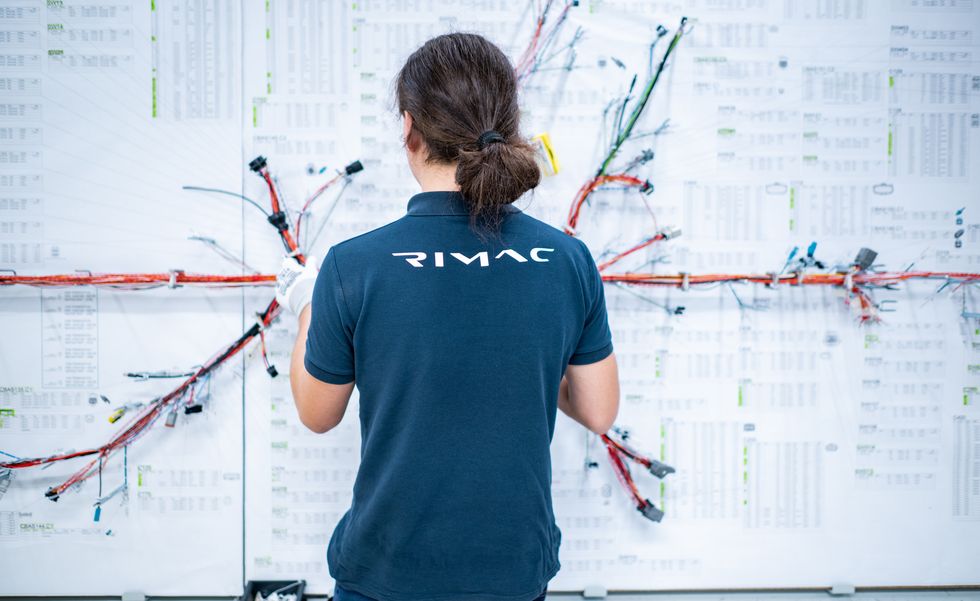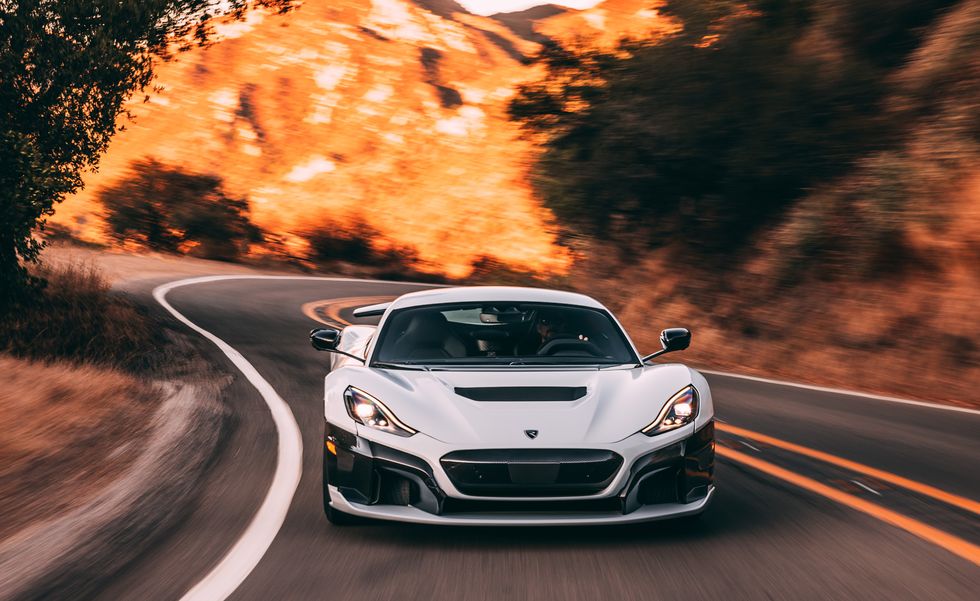Marta Longin, the head of communications at Rimac Automobili, gestures toward an empty expanse of poured concrete, roofed only by exposed ducting. “That area,” she says, “will be for hypercar production.” She adjusts her hardhat, a bright blue plastic cosplay construction prop that matches the one I’m wearing. I squint into the middle distance of the 800,000-square-foot factory her employer’s sister company, Rimac Technology, is currently constructing on this new “campus” on the outskirts of Zagreb.
“We will build the rest of the Nevera run, up to car 150, here,” she says, referencing Rimac’s outrageous, $2.2 million electric hypercar. “Once it completes production, it will have been made in four different facilities.”
The range of assembly sites for the emergent marque’s first vehicle underscores the phenomenal growth experienced by Croatia’s premier, and only, automaker. Founded in 2009, by barely post-adolescent engineering wunderkind Mate Rimac (now 35), with a mission of bringing high performance to the world of electric cars, Rimac now looks to be bringing electric power to high-performance cars.
Battery Clientele to Include Porsche, Aston Martin
In addition to its own vehicles, once the new factory campus is completed, Rimac Technologies will be building high-performance battery systems for some of the biggest, and best-respected, names in autodom—Porsche, Aston Martin, and Koenigsegg—as well as other, heretofore unannounced partners. Rimac’s electrical architecture and powertrain expertise is so appealing, it won itself a Bugatti merger a few years back, so eager was that marque to gain access to Rimac’s tech and cement its pinnacle EV future.
“We want to be, for OEMs, a Tier 1 supplier,” Longin says. “Like the way manufacturers are proud to say Brembo is doing their brakes, we want them to say Rimac is doing batteries for their performance battery systems.” Powered by Rimac, will be a shorthand means of appropriating the brand’s electric hypercar glory. These bragging rights are bona fide, and they include Rimac’s current status as builder of the quickest car in the world. The Nevera recently set nearly two dozen speed and braking records, including accelerating from zero to 60 mph in just 1.7 seconds.
A Nevera Every Seven Weeks
Meanwhile, at the brand’s current headquarters and production facility, a Nevera is being completed every seven weeks. The car’s giant carbon-fiber monocoque, the largest piece of the material utilized in the industry, is woven and cured on site. Each body requires 222 integrated aluminum inserts and 300 more connectors that are placed by hand, using custom-constructed aluminum jigs.
The body panels and the frame are hand-buffed and matched before being disassembled and sent to an on-site paint shop. An in-house mixologist can recommend exterior and interior color combinations, or create a unique one-off to match a customer’s rainbowed whim. Equally flamboyant is the onsite upholstery shop, pegged full of hanging hides in Necco Wafer hues. This, despite the fact that Mate, a committed vegetarian, tells clients, “Alcantara is better.”
Quality control requires two weeks and includes neurotic rounds of alignment and dyno testing as well as exposure to a “monsoon room,” simulating hurricane-force winds and rain, to ensure that components and seals are free of leaks. (This, Longin points out, is its own Easter egg: A Nevera is a sudden, fierce Mediterranean storm.) After the storm, a full-body protective vinyl wrap is adhered, and the car is subjected to up to 500 contractually agreed-upon miles of shakedown road testing. Once it’s unwrapped, the finish is light-tunnel-tested by an external third-party evaluator. The quality control chief reports directly to the CEO.
16 Miles of Wire
Rimac’s inveterate obsessiveness is on fullest display in the wiring room. Here, 10,000 wires and connectors—143 pounds, and over 16 miles’ worth—are sorted, attached, wound, bound, and tested by hand by a team of over 40 technicians, who work at rows of color-coded, templated peg boards with the manic patience of a beader at a 1920s haute couture fashion house. “Most companies outsource this,” Longin says. “But it would take too long with suppliers, and they were not able to make changes and adaptations as readily as we needed.”
Rimac plans to build 40 Neveras here in 2023 before moving production to the new facility in early 2024. There, the company plans to increase output to 50 cars per year. After that, a significant portion of the current site will be turned over to battery-pack production for as yet unnamed clients. But the planned scale reveals Rimac’s, and the auto industry’s, ambitions for stamping its alluring imprint on performance EVs. “We’re estimating about 30,000 to 50,000 packs each year,” Longin says.
We point out that this surpasses any annual Valkyrie or even Taycan production numbers. She just smirks.
Contributing Editor
Brett Berk (he/him) is a former preschool teacher and early childhood center director who spent a decade as a youth and family researcher and now covers the topics of kids and the auto industry for publications including CNN, the New York Times, Popular Mechanics and more. He has published a parenting book, The Gay Uncle’s Guide to Parenting, and since 2008 has driven and reviewed thousands of cars for Car and Driver and Road & Track, where he is contributing editor. He has also written for Architectural Digest, Billboard, ELLE Decor, Esquire, GQ, Travel + Leisure and Vanity Fair.

